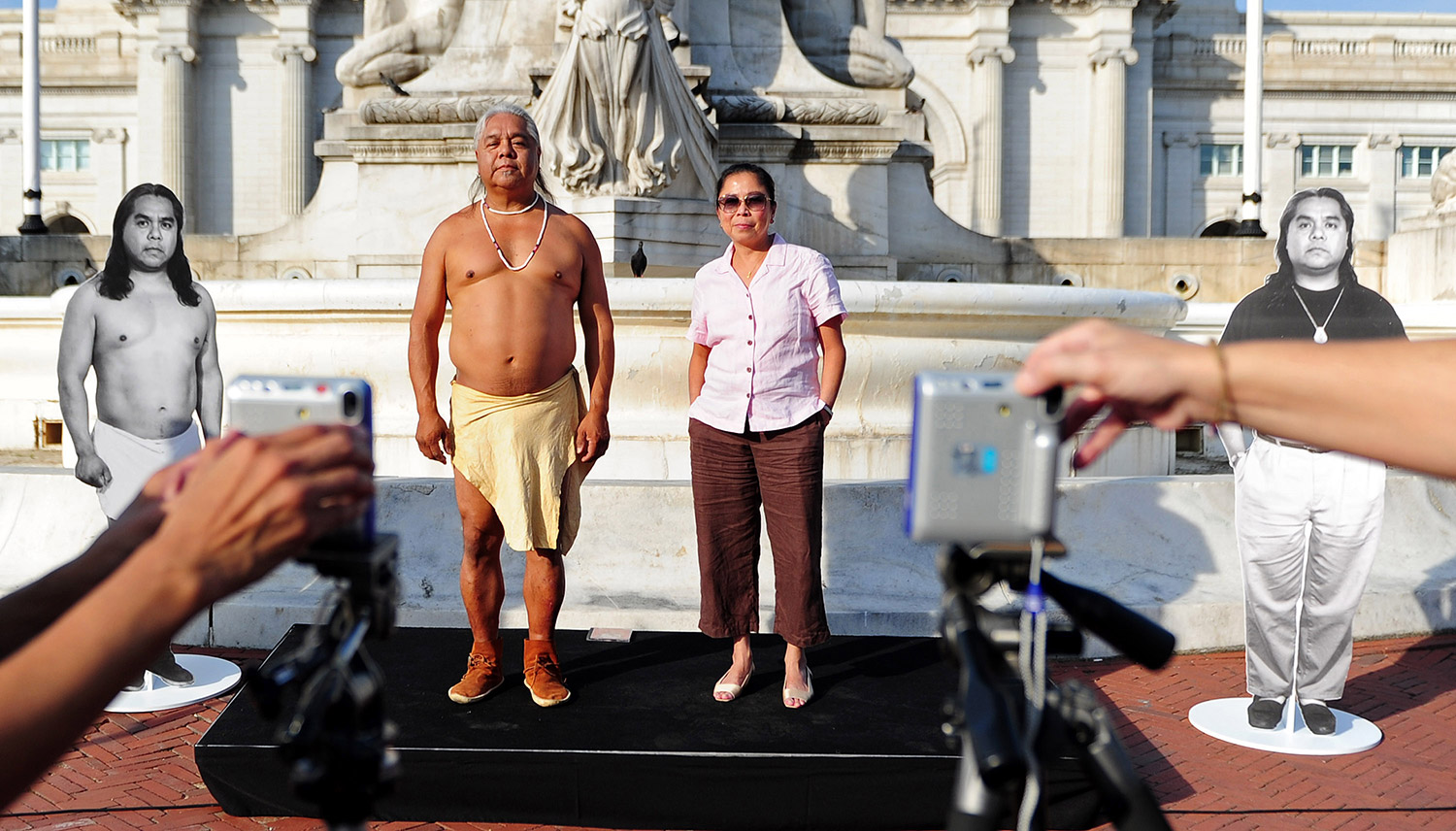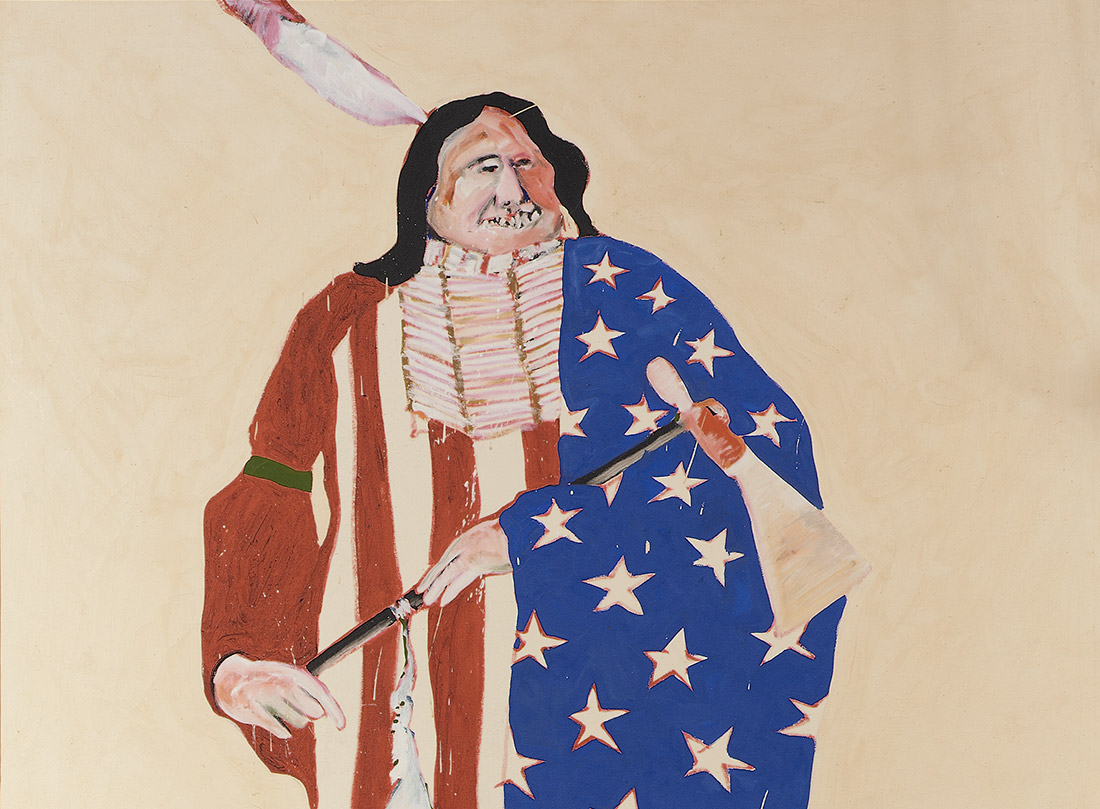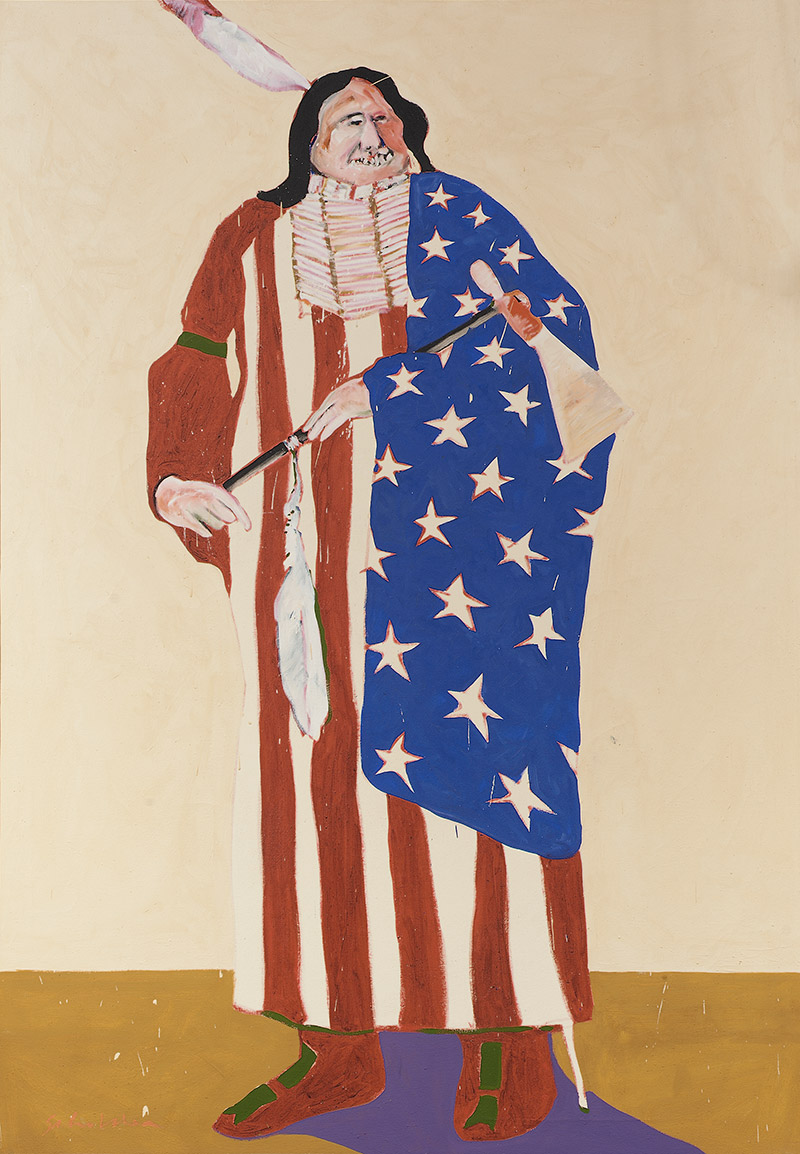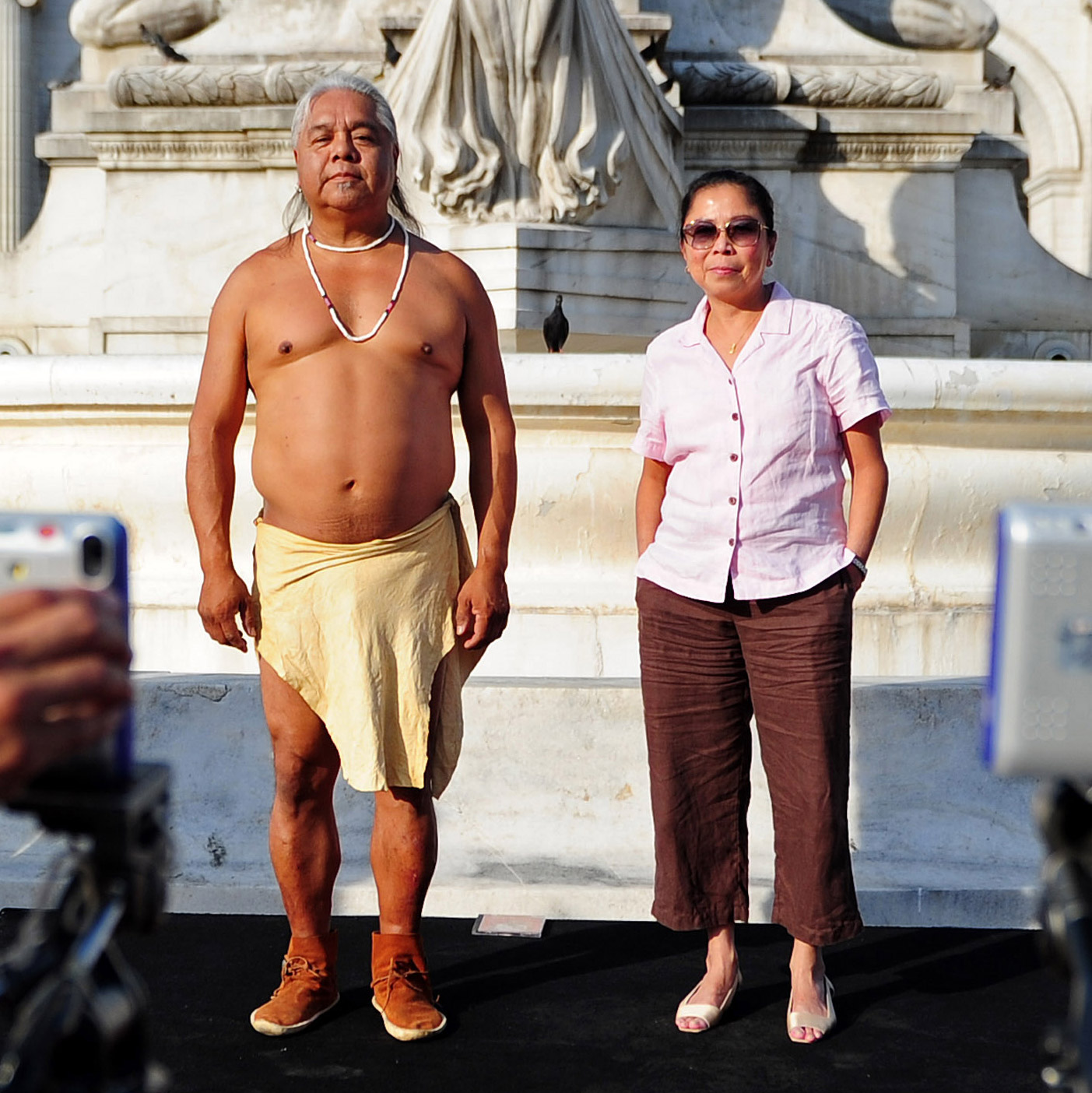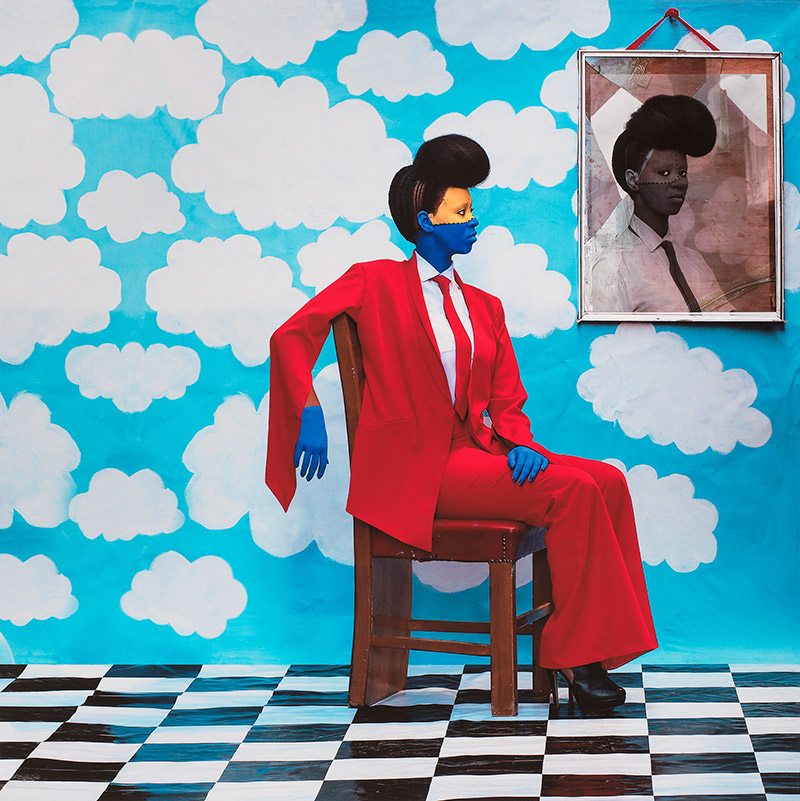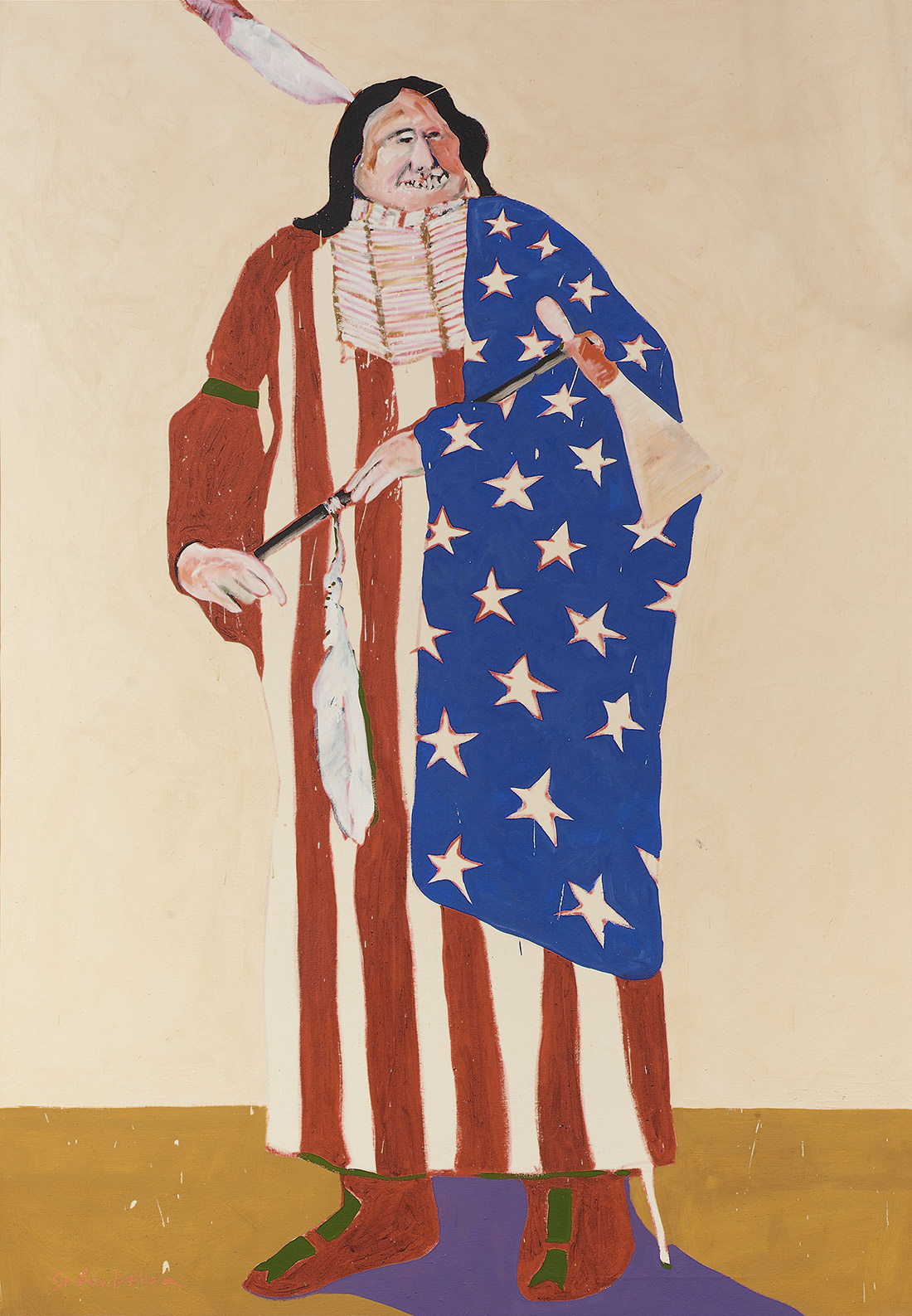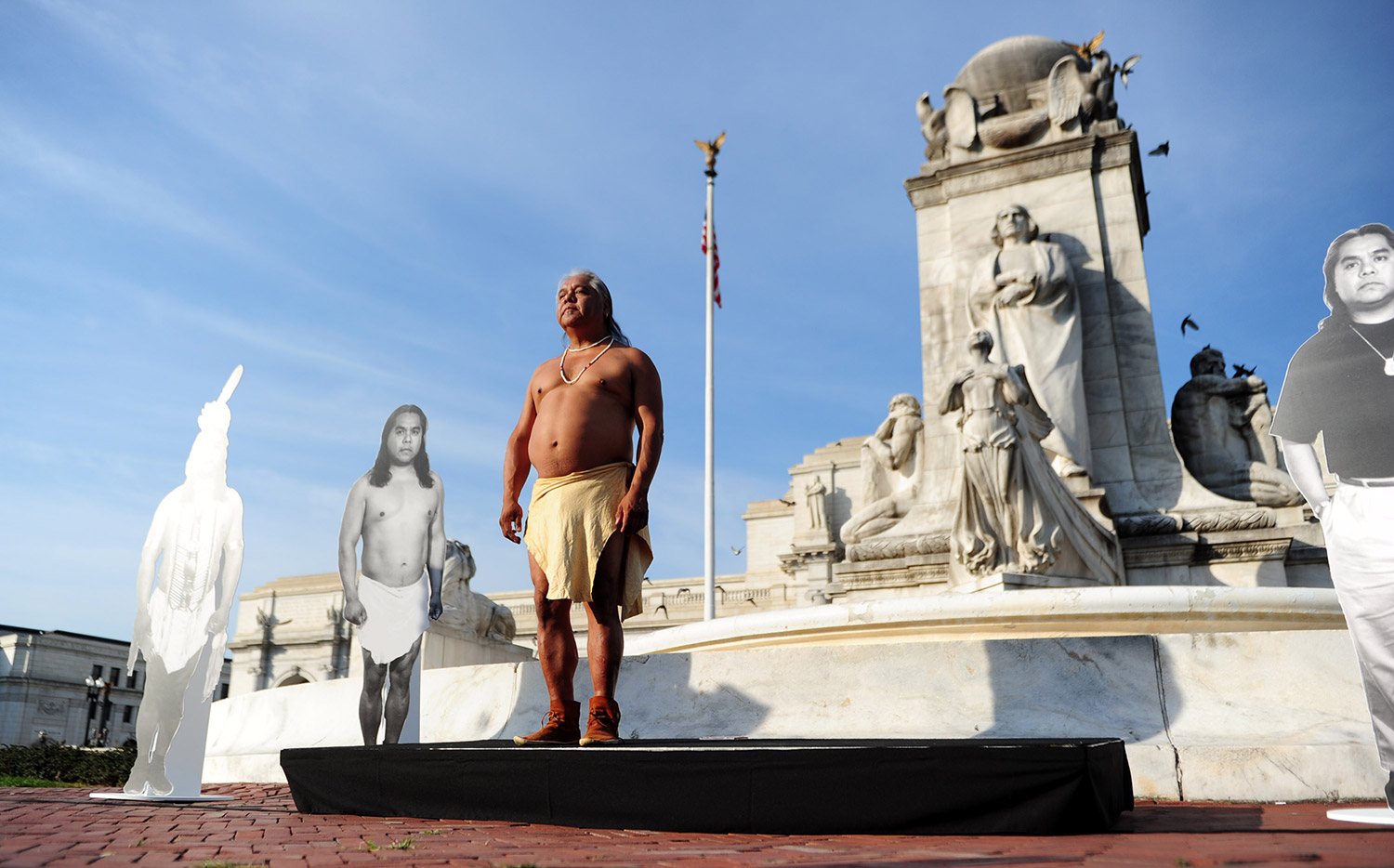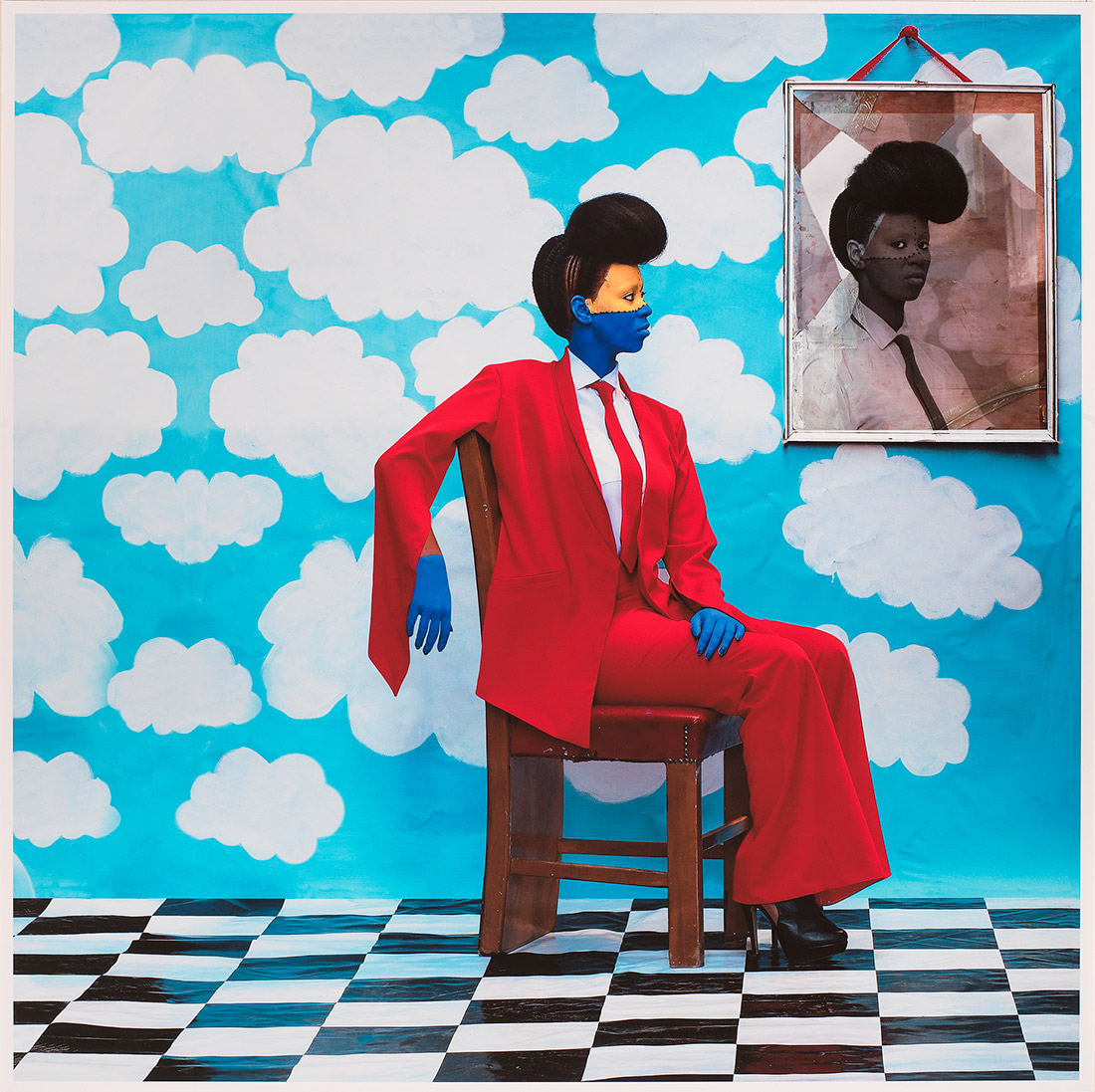The people are getting up there to have their picture taken with an Indian, just like they would have their picture taken with the bull statue on Wall Street. It is there for the taking. Indian people always have been fair game . . .
James Luna, Smithsonian.com
On Columbus Day in 2010, Native American artist James Luna conducted the performance “Take a Picture with a Real Indian” in front of Union Station in Washington, D.C. Underneath the figure of Christopher Columbus in the 1912 Lorado Taft Columbus Fountain, Luna, dressed in a loin cloth, invited passersby to pose with him. What some may have thought was a celebration of Columbus’s “discovery” of America was actually an ironic critique of the dismantling of Native identity in America. Throughout the performance he changed into different types of “native” garb, including a feather headdress as well as a plain shirt and khaki pants. The performance, held in association with the National Museum of the American Indian’s exhibition Vantage Point: The Contemporary Native Art Collection, reframed the stereotypical notions of what constitutes a real Indian by mimicking actual cultural tourist attractions across the United States in which “real” Indians pose in what is thought to be traditional garb for tourist cameras. He also flips the script on the ubiquitous cardboard cutouts of U.S. presidents that tourists pose with in Washington, D.C., throwing into relief the artifice of politics as well as history. Luna’s seemingly serendipitous encounters with audiences provoke reactions that produce moments of understanding through humor, irony, and confrontation. In this way, both the artist and the spectator create meaning through the shared experience.
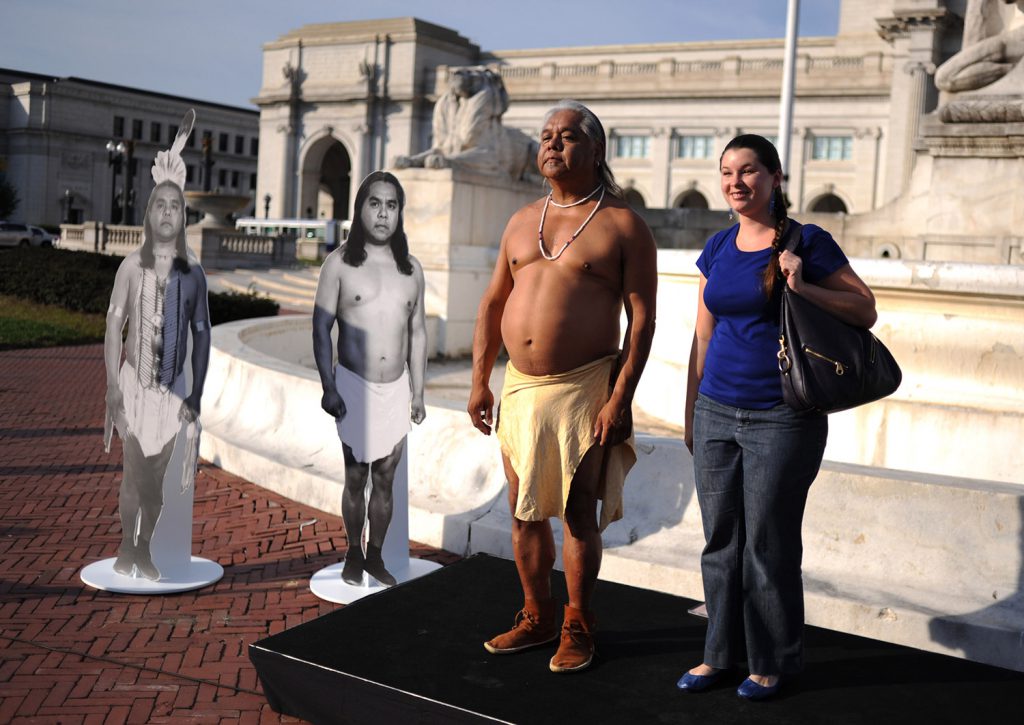
James Luna, 1950–2018, Orange, California, United States, Take a Picture With a Real Indian, 2010 UPI/Kevin Dietsch

James Luna, 1950–2018, Orange, California, United States, Take a Picture With a Real Indian, 2010 UPI/Kevin Dietsch


